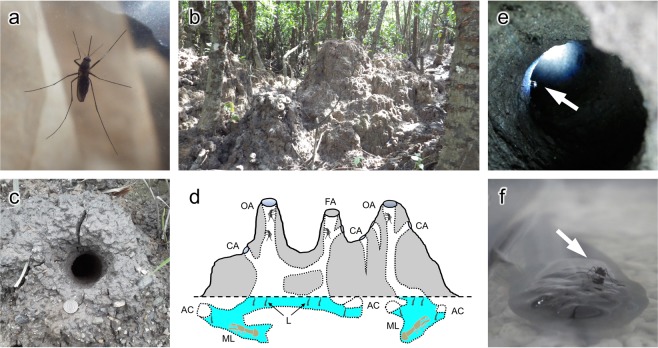Figure 1.
The life-history of Aedes baisasi. (a) An adult female. (b) Mounds made by a mud lobster Thalassina anomala in a mangrove forest. (c) Aperture of a burrow in the mound. The coin is 22.6 mm in diameter. (d) Hypothesized structure of a mound, modified with permission from Miyagi & Toma57. Apertures of lobster burrows are basically open (OA), but are sometimes filled with mud (FA). Apertures of burrows made by crabs on the mounds (CA) are often connected to those made by the lobster. The lower part of the burrow is filled with brackish water, where A. baisasi larvae (L) live. Mud lobsters (ML) usually stay in brackish water and in an air chamber (AC) in the burrow. (e) An adult resting on the wall of the burrow (arrow). (f) A female feeding on the exposed surface of Bostrychus sinensis (arrow) in an enclosed cage during a preliminary experiment. Photo credits: Takashi Miyake.

